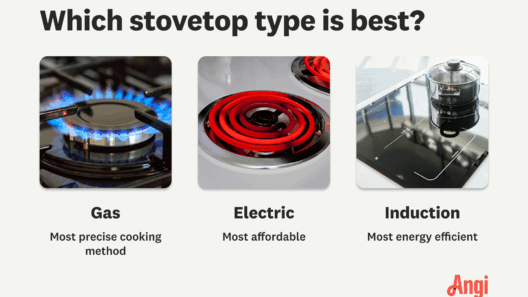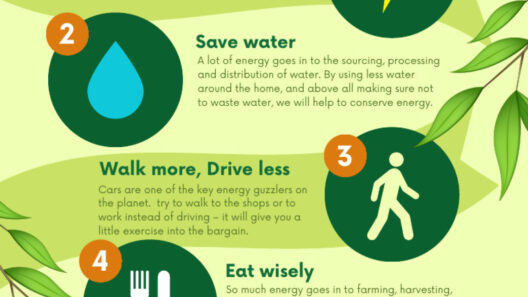As we ponder the journey of our food from fridge to fork, it becomes increasingly clear that energy conservation plays a pivotal role in food sustainability. Have you ever stopped to wonder how much energy is consumed from the moment food is harvested until the moment it reaches your plate? It’s a challenge worth examining, especially given the environmental implications of our food systems.
The journey of food encompasses numerous stages: agricultural production, processing, transportation, storage, and preparation. At each step, energy is expended, often without us considering its impact on the environment. A reverberating question emerges: How can we effectively reduce energy consumption in our food systems to promote sustainability?
To begin with, energy conservation should start at the source—agriculture. Traditional farming methods are often energy-intensive, utilizing fossil fuels for machinery, irrigation, and transportation. However, sustainable practices such as permaculture and organic farming offer low-energy alternatives. By implementing crop rotation and polyculture, farmers can enhance soil health and biodiversity while diminishing energy inputs. The challenge for many farmers lies in transitioning to these practices without sacrificing yield. Thus, an exploration of innovative technologies and farming methods is critical to easing this shift.
Once food is harvested, it enters the processing stage, where energy consumption can skyrocket. Processes such as canning, freezing, and dehydrating food require substantial electrical energy. Re-examining these methods through the lens of energy efficiency could lead to remarkable improvements. Techniques such as solar drying and anaerobic digestion not only conserve energy but can simultaneously decrease waste. Furthermore, community-supported agriculture (CSA) initiatives encourage local processing, reducing the need for long-haul transportation, which is often powered by fossil fuels.
Transportation is another significant contributor to energy expenditure in food distribution. The farm-to-table movement has gained traction in recent years, emphasizing the importance of sourcing food locally. Reducing the distance food travels generates fewer greenhouse gas emissions, aligning with energy conservation principles. However, merely prioritizing local food sources is not enough. Communities must also advocate for infrastructure improvements that support sustainable transport. Implementing dedicated bike lanes for deliveries, enhancing public transport for market access, and promoting alternative fuel vehicles can collectively contribute to energy reduction in food transport.
When food reaches retail outlets, energy consumption remains a pertinent issue. Supermarkets and grocery stores often utilize excessive refrigeration and lighting, which contribute to their overall carbon footprint. Engaging in energy-efficient practices, such as installing LED lighting or utilizing energy-star rated appliances, can help mitigate this impact. Yet, energy conservation does not solely rest on the shoulders of retailers. Consumer behavior plays a significant role. By making conscientious purchasing decisions—opt for bulk buying or encourage stores to adopt green practices—consumers can drive demand for sustainability.
Moreover, the significance of energy conservation becomes particularly relevant during food storage and preparation. It is estimated that households contribute significantly to food wastage, with a proportion of this waste arising from improper storage practices. Utilizing efficient storage techniques can prolong food freshness, thereby reducing waste and energy usage. For example, maintaining optimal refrigerator temperatures and using airtight containers can minimize spoilage. Additionally, awareness of energy-efficient cooking methods, such as pressure cooking or using a microwave, can lead to substantial energy savings in the kitchen.
As we delve deeper into the conversation surrounding energy conservation, it becomes evident that education is vital. Empowering individuals with the knowledge of sustainable practices fosters a collective responsibility towards energy-efficient food consumption. Schools and community programs could introduce curricula focusing on the food-energy nexus, equipping future generations with the tools to effect change.
Moreover, integrating technology into our food systems could provide innovative solutions to enhance energy conservation. Smart appliances that monitor energy use and suggest optimal cooking times, for example, can transform traditional kitchen practices. Apps that track food inventory, usage, and spoilage can also promote responsible consumption patterns, circumventing the tendency to over-purchase and thus waste energy.
It is essential to recognize that this holistic approach requires multi-stakeholder collaboration. Governments, farmers, businesses, and consumers must converge to forge pathways towards sustainable food systems. Policy frameworks that incentivize sustainable practices can drive the agricultural sector towards greener methods. Furthermore, businesses adopting corporate social responsibility initiatives can establish themselves as leaders in the energy-conserving food movement.
In conclusion, the journey from fridge to fork is an intricate tapestry that intricately intertwines energy conservation with food sustainability. As we navigate this complex relationship, it becomes apparent that the choices we make—be it as farmers, consumers, or policymakers—significantly impact our environment. By embracing innovative practices, advocating for sustainable policies, and fostering community education, we can collectively tackle the challenge of energy consumption in our food systems. As we persist on this journey, may we remain inquisitive and committed to leaving a sustainable legacy for future generations. The questions raised today should propel us toward action, emphasizing that the journey from fridge to fork is not just about nourishment but also about nurturing our planet. What steps are you prepared to take alongside others to champion energy conservation in your food choices?








